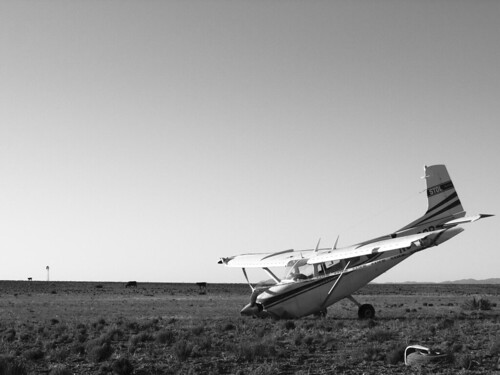By Doug Daniel

This is the one skill that makes the difference between good pilots and so-so pilots. It applies to visual flying and instrument flying, to gliders, land planes and seaplanes, to single engine planes and multi-engine planes, to jets and props. Often referred to as attitude flying, it is really taking charge, deciding what you want to do and doing it.
You must hold the airplane in what ever attitude you choose. For example, the secret to a three-point landing is to put the airplane in a three point landing attitude just above the runway at the right airspeed and hold it in that attitude until it lands. Don't put it in the three-point attitude then let the nose drop. Hold it in the attitude. Be in command.
The secret to successful instrument approaches is to decide what heading, altitude or rate of descent, and airspeed to fly then to take command and fly. Don't chase the needle; don't let the heading wander; and don't drift off altitude; just take charge and fly.
The secret to successful crosswind landings is to align your fuselage parallel to the runway with your rudder pedals, control your airspeed with your elevator controls, and keep your airplane exactly over the center line of the runway with your aileron controls. You cannot do this by letting your nose weave aimlessly, by letting the airplane drift around, or by letting the nose pitch up or down. You must be in command. You must know exactly how you want your airplane oriented in space then you must put it there.
As the airspeed changes and as the wind gusts, your control input must change accordingly. Put that behind you. Don't even think about it. Just think about the airplane's attitude compared with what it should be. When the airplane so much as twitches out of place, put it back where it belongs. You must do whatever it takes to keep the airplane in the attitude you need.
You cannot control an airplane's attitude if you are not continuously aware of its attitude. Sounds straightforward, doesn't it? But this is the reason that some pilots seem to be passengers rather than pilots. They don't yet have that sense of situational awareness that all good pilots possess. How then to have situational awareness?
Think about the airplane's attitude more than any other parameter. When flying visually, spend most of your time mentally out of the airplane. Don't be a casual observer. Don't say, "Oh, the horizon is slowing dropping. Isn't that interesting?" Think of the world as staying still and of the airplane's attitude as changing. As soon as the nose starts up, bring it back down. Certainly you want to tweak the trim so you don't need to concentrate, but put the pitch attitude where is should be. That is your task. Be in charge.
The same advice is valid for instrument flying. You can still be mentally out of the airplane even if there is nothing to see when you look out the window. The attitude indicator and every other flight instrument tell you something about your airplane's attitude.
Whether in the clouds or clear sky, you must maintain a mental picture of your airplane in space.
Know what your airplane's altitude should be; always know what your airplane's altitude is; and make them the same.
----------------------------------
Doug Daniel is a long time pilot, flight instructor, software engineering manager and author. His department developed the software for the out-the-window-displays for the space shuttle, F-117, RS-71 and numerous other exotic aircraft simulators. His writing focuses on flying techniques designed to make flying easier and safer. If this was interesting, visit his website at http://www.FlyingSecretsRevealed.com/flying_questions.
Article Source: http://EzineArticles.com/?expert=Doug_Daniel http://EzineArticles.com/?The-Piloting-Skill-More-Important-Than-All-Others&id=1905584
No comments:
Post a Comment